Water Diviner Stephen Kelley
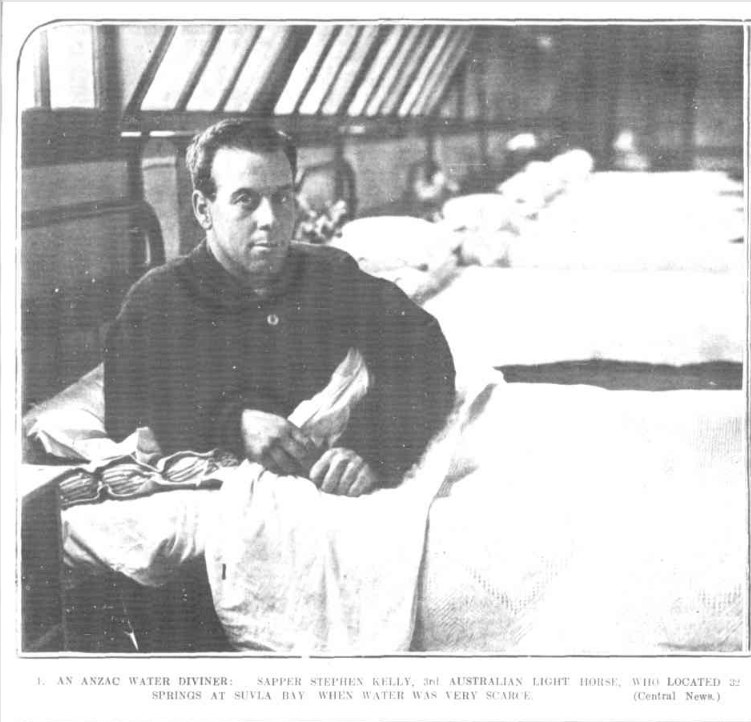
From Waler Data Base @ Facebook. Image: Australasian, 1st July 1916
Horses on Gallipoli – and the story of a water diviner who saved thousands of lives there…
The British landed at Suvla Bay with horses and men sent over from Mudros, now Moudros – in Greece – as enemy submarines were about. The British Navy were the first in that war to prove a sub could get through the Dardanelles Strait. British troops landed at Suvla soon after us.

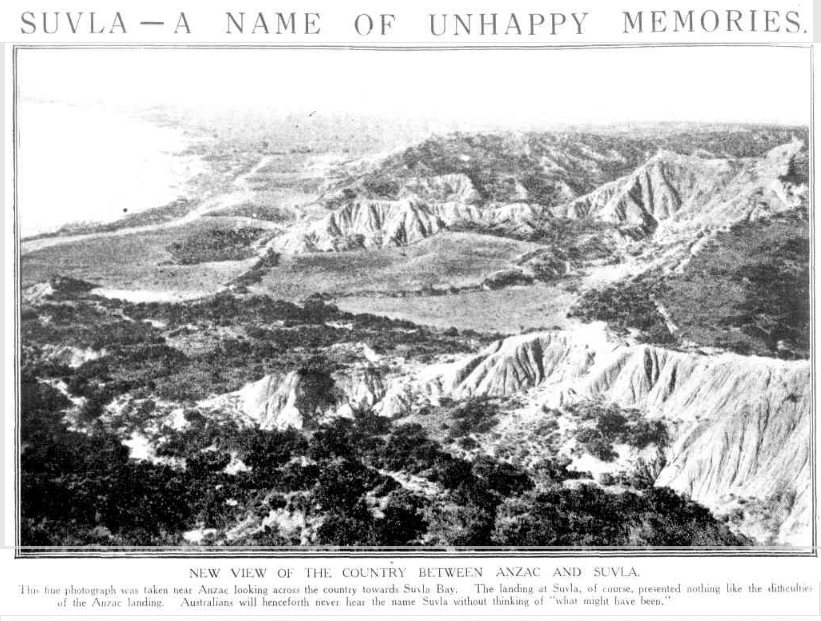
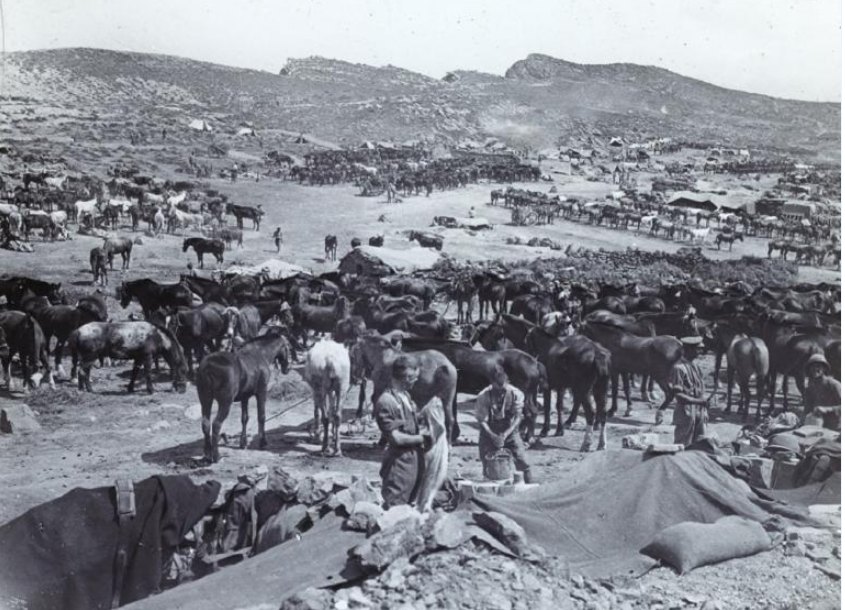
Images from Sydney Mail: Transporting men & horses to the Dardanelles May 1915; Suvla 1916
The bay was slightly safer as the Turks knew there was no water, so concentrated efforts elsewhere. Their planes came over a lot but our managed to chase them away. British General Sir Ian Hamilton who orchestrated the Gallipoli campaign believed we could take the whole Peninsula from Suvla, as his disastrous Gallipoli campaign was failing; but he made another terrible bungle – tens of thousands more deaths.
Horses and mules were needed more for pack animals as it turned out – they were under fire at nearby Anzac Cove so survivors there were hurried to Suvla too. A few speedy horses were used for despatch riders from Suvla to Anzac cove.
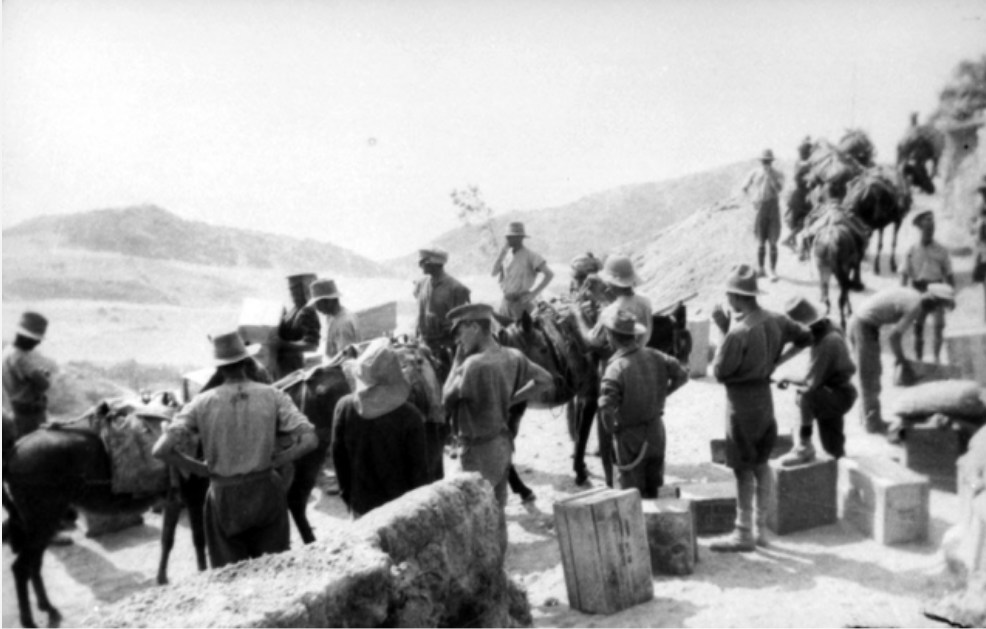
There was no water at Suvla when men, horses, donkeys and mules landed there in August 1915 in hot, dry conditions. By the 11th they were down to less than a pint of water per man; thousands were desperately thirsty. It looked as if the animals would have to be shot.
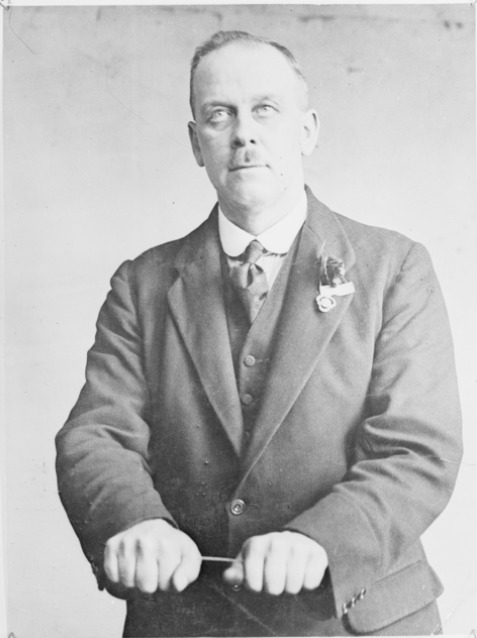
Image: Mr Stephen Kelley, late trooper of the 3rd Australian Light Horse Regiment, who successfully divined water on the Gallipoli Peninsula. Mr Kelley is demonstrating the method he uses holding a small piece of copper wire…AWM
undated.
Stephen Kelley of the 3rd Light Horse Regiment who’d fought at Suvla on the 8th, 9th, 10th and 11th of August with the 3rd Light Horse Brigade, came to the rescue – an hydraulic engineer in civvies with a special skill – water divining. Of course, he was poo-poo’d for days if he mentioned he could find water.
Finally, a New Zealand officer, Captain Shearen, listened to him when he said he knew they were standing on water. Shearen went to Brigadier-General Hughes. Hughes also listened and gave permission for Kelley to have a go – and he knew of his engineering firm and his reputation in civvies.
Kelley wanted a copper divining rod, there were none, so he hurriedly made one from the rim of a used ammo shell.
All the experts had said there was no water there – Hughes had their wads of studies to prove it, but he took a punt on Kelley. Kelley in fact had shrapnel wounds at that stage, but said nothing, hoping to save them all by finding water.
He was a partner in Kelley and Basset, engineers, of Melbourne. He’d used water divining to find water for Sid Kidman among others, and had found it on the Ninety Mile stretch between Adelaide and Melbourne. He could use his bare hands but believed copper better, even a row of pennies on his hand worked. He never used wood.
Nekminnit, he found water! They dug through sand, and yes a little was there – wet sand, where they already had a small sandy well. Kelley told them to dig deeper. Soon, men began to pump what proved to be a very good supply of fresh water. Kelley was given 1,000 men at his disposal. They worked extremely hard – it was so hot their mouths dried out, they couldn’t talk. However they got more water – soon, men, horses and mules were given a little drink to keep them alive.
By the end of three days Kelley and his men had 30 good wells dug. Cold, clean spring water came from them and one of the best was right by Hughes’ HQ!
An allowance was made of one gallon of water a day for men, and six gallons a day each for mules and horses – Kelly had worked out the capacity of the wells.
After the well sinking was finished he collapsed from heat exhaustion and was taken to the hospital ship to go to Malta, to cheers from all. Not improving at Malta, he was sent to England where he recovered in a couple of months.
Water came over for troops and animals from Mudros to Suvla sporadically, shipped in kerosene tins, but it was hot and unclean and never enough. Half the men got dysentery and enteric fever on Gallipoli – thousands. At one stage British troops at Suvla went 48 hours without water, as they drank their allowance when given it, not realising to ration it.
Many died on Gallipoli from lack of water, and many advances had to be cancelled because of it – another Hamilton bungle was not ensuring the simple logistics of water for troops. With water, it’s believed the whole campaign may have been successful, certainly not the deadly place it was.

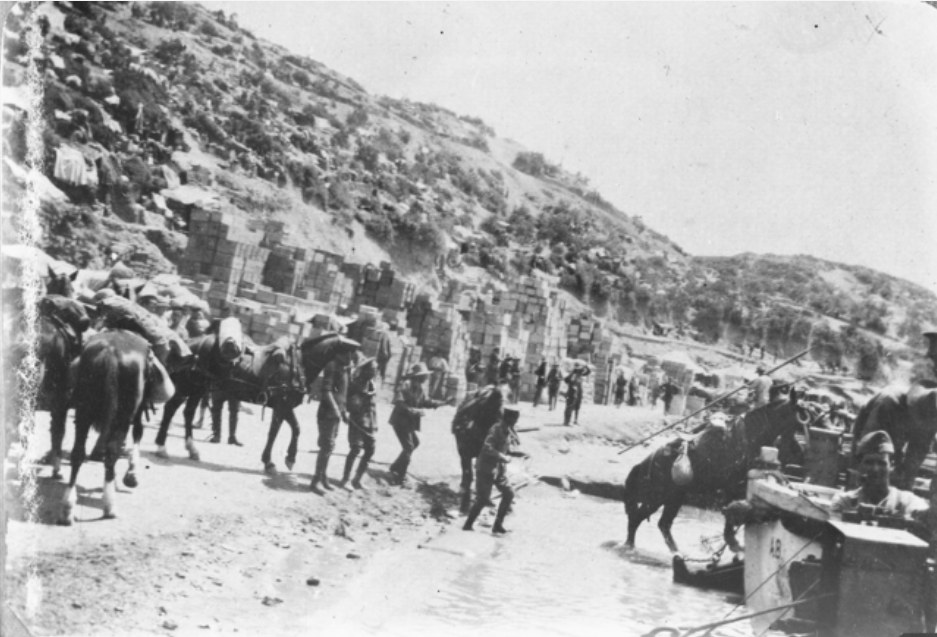
Images: Western Mail, 24th March 1916. Horses have been brought to shelter by cliffs at Gully Beach, before evacuating them; Horses of the 5th Battery about to be loaded onto boats after an advance was considered unlikely. Boxes of supplies are piled high on the beach. May 1915. AWM
Kelley’s name is often misspelled Kelty and Kelly in articles of the time, if one is researching (archives goes on exact spelling, so sometimes the wrong spelling helps too). Thank you Stephen Kelley.
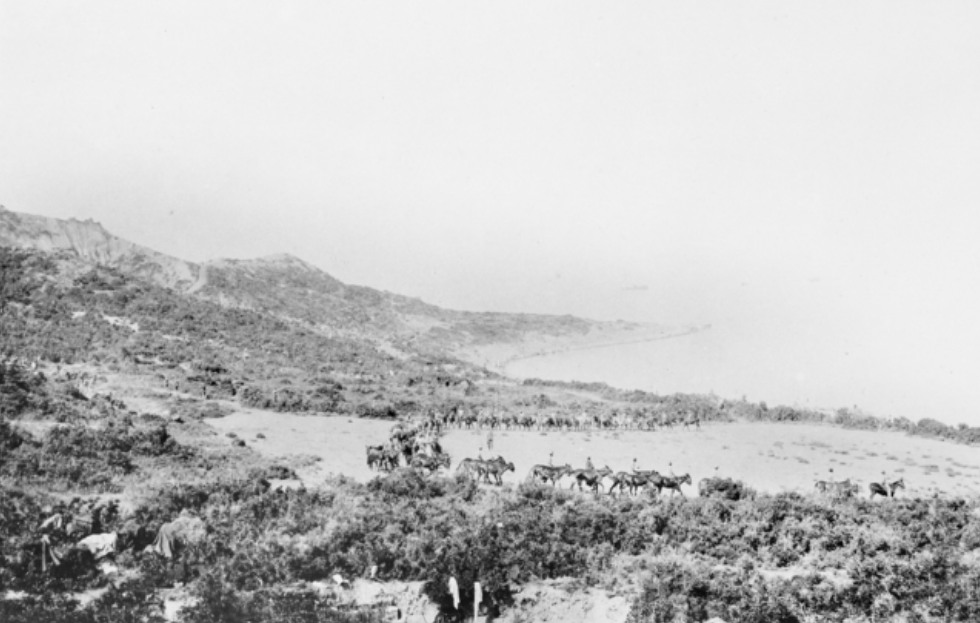
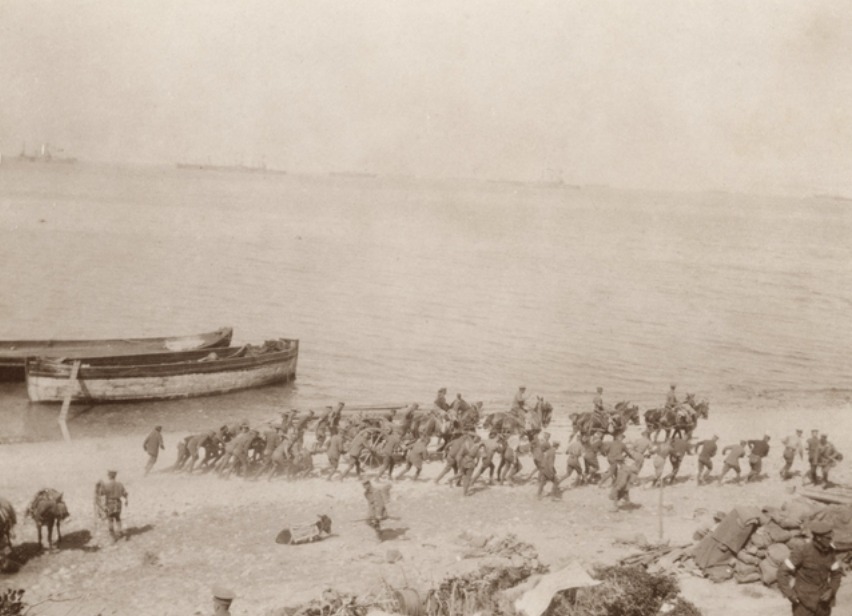
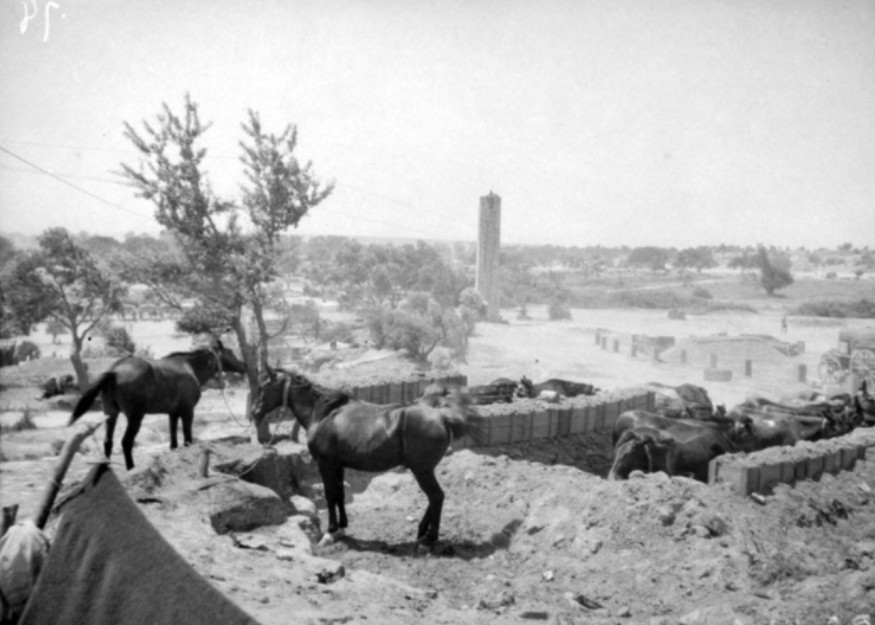
AWM images: Gallipoli, Turkey. Members of 8th Australian Light Horse Regiment exercising their horses in a site set aside for that purpose. 1915; Combined teams of men and horses labour to drag an artillery piece along the beach at Gallipoli. Cape Helles area, Gallipoli, Turkey. 1915; Horse shelters at Helles. Gallipoli, Turkey. 1915.

“Little West Beach, Suvla, Gallipoli. Trestle Pier completed with Egyptian iron pontoons at end and Horse lighters alongside”
This image is from one of two albums (P11155 and P11165) relating to the service of Lieutenant Commander Leighton Seymour Bracegirdle RAN (later Commander, DSO), Officer Commanding the 1st Royal Australian Naval Bridging Train at Gallipoli. AWM